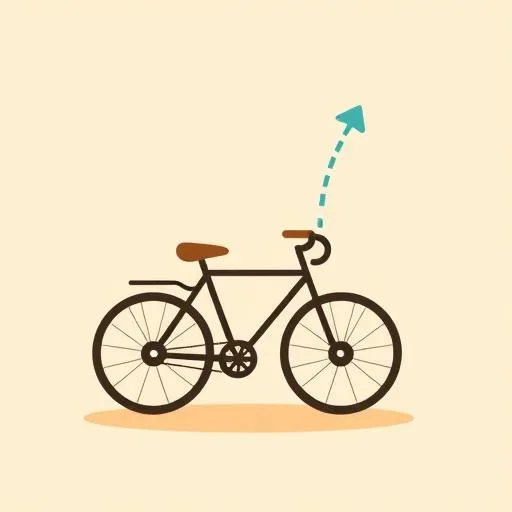
Ever watch a kid build a block tower that wobbles but won’t fall? That’s resilience in action—pure, stubborn, beautiful. Can you believe what the World Economic Forum’s 2025 report is shouting from the rooftops? While headlines scream about careers reshuffling faster than a deck of cards, we’re quietly building something more enduring in our children: the unshakeable human skills no algorithm can replicate. Imagine that!
How Is the Ground Shifting—And Why That’s Amazing!

Let’s talk about the elephant in the room: that knot in your stomach when you read the Future of Jobs Report saying 39% of today’s core skills might fade by 2030. Feels like trying to navigate a hiking trail while the map redraws itself mid-step, right? I’ll admit, sometimes I worry about this too, but then I see my seven-year-old trading her leftover kimchi pancake for a classmate’s apple slices and negotiating like a tiny diplomat—boom, there’s hope!
But get this—here’s the incredibly reassuring news that’ll make you breathe easier: last year the prediction was 44%. Isn’t that amazing? More folks (50%!) are upskilling now than ever before, smoothing the path. This isn’t panic—it’s progress pacing itself, like teaching a kid to ride a bike. Wobbles? Guaranteed. They really do. Yet each stumble adjusts their balance for the next hill. Employers now see this too: 85% prioritize upskilling because locked-down skills gather dust. What if we treated “not knowing yet” as the prelude to “figuring out together”?
What’s the Secret Superpower in a LEGO Bin?

That moment when your child negotiates sharing toys on the playground? Pure gold. GenAI might draft emails, but it’ll never grasp why Timmy trades his blue truck for three marbles and a promise to sit together at snack time. The report nails it: skills needing nuanced understanding, complex problem-solving, or sensory joy stay forever human.
Watch kids build forts or invent backyard games—they’re already mastering what tech can’t touch: creativity sparked by mud pies, empathy forged during board game losses. Remember those moments when they’re so focused during play? That’s where resilience is quietly being forged, one dice roll at a time.
Cooking with them drives this home. Let them measure flour even if half ends up on the counter. The feel of dough, the smell of burnt cookies—they’re learning variables no spreadsheet captures. When employers say humans must stay in the loop, they’re really backing what happens in messy kitchens and sandbox meetings: judgment born from doing, not just processing.
How Can We Learn Alongside, Not Ahead?

Building on that, remember when ‘upskilling’ meant night classes after work? Today it’s as simple as trying a new board game as a family. The WEF highlights that leading professionals combine technical smarts with human warmth—exactly what we model by putting phones away during dinner. No need to master JavaScript; just wonder aloud about rainbows after a summer shower. ‘How do you think those colors got there?’ invites curiosity better than any app.
Next time you’re stuck fixing a leaky faucet, let the kids ‘consult.’ Their wild ideas (‘Tape the drip away!’) teach iteration. You’re not teaching careers—you’re building confidence to ask, ‘What if we tried…?’ And when the WEF notes employers rank communication and leadership as top high-income skills? You’ve been practicing those at the dinner table since Day One—like blending traditional values with modern solutions; just like those family meals where grandma’s recipe meets a new twist.
How Does Future-Proofing Start with Feet on the Ground?

Beneath the buzzwords, the report reveals something quietly hopeful: the kids we raise today become the innovators who’ll use tech, not serve it. They’ll need less fluency in coding and more in ‘what makes people sigh with relief.’ So yes, explore those AI art tools together—but immediately step outside. Trace cloud shapes while lying on the grass. Trade screen time for ‘story time’ where they invent adventures about squirrels building robots. Real-world texture grounds them.
What small moment of resilience have you seen in your child this week? That 25°C glow outside? Perfect for spontaneous detours: ‘Let’s count how many green things we see walking home!’ It’s not about ignoring trends; it’s weaving them into life’s rhythm. And when 63% of telecom workers need new training by 2030, remember—your child’s ability to connect a stranger’s smile to their own happiness? That’ll still be priceless. Future-proofing isn’t armor; it’s a dance where we let go of the floor we knew and trust our balance.
When we tuck them in at night, safe from algorithms and job reports, we’re not just parenting—we’re planting trees whose shade we may never sit in. Isn’t that the most hopeful thought of all?
Source: The Great Upskilling Race of 2025: Future-Proofing Your Career with High-Income Skills, The Undercover Recruiter, 2025/09/05
